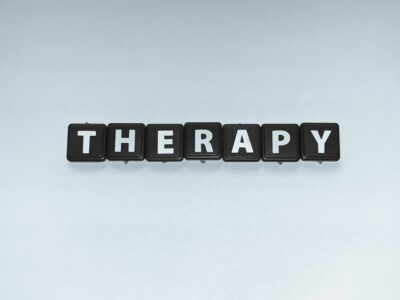When seeking mental health support, one of the most important considerations is understanding the financial investment required for different therapeutic approaches. The debate around CBT vs traditional therapy cost has become increasingly relevant as more people recognize the value of mental health care while navigating budget constraints. Both Cognitive Behavioral Therapy (CBT) and traditional psychodynamic therapy offer unique benefits, but their cost structures can vary significantly based on factors such as session frequency, treatment duration, and long-term outcomes.
Understanding these cost differences is crucial for making an informed decision about your mental health care. While the upfront investment might seem daunting, it’s essential to consider both the immediate expenses and the long-term financial implications of each therapeutic approach. Many individuals find that the cost-effectiveness of their chosen therapy depends not only on the price per session but also on factors like treatment duration, insurance coverage, and the likelihood of achieving lasting results.
Understanding CBT Cost Structure
Cognitive Behavioral Therapy typically operates on a more structured and time-limited framework compared to traditional therapeutic approaches. Most CBT treatments range from 12 to 20 sessions, with each session lasting approximately 45 to 60 minutes. The average cost per CBT session ranges from $100 to $200, depending on your location, the therapist’s credentials, and whether you’re seeing someone in private practice or at a community mental health center.
One of the significant advantages of CBT from a financial perspective is its goal-oriented nature. Therapists work with clients to establish specific, measurable objectives and typically provide a treatment timeline upfront. This transparency allows individuals to budget more effectively for their mental health care. Additionally, many insurance providers offer better coverage for CBT due to its evidence-based approach and proven effectiveness for conditions like anxiety, depression, and PTSD.
The structured nature of CBT also means that clients often receive homework assignments and practical tools they can continue using after therapy concludes. This self-help component can extend the benefits of treatment without additional costs, potentially reducing the need for future sessions. Many CBT practitioners also offer group therapy options, which can significantly reduce per-session costs while still providing effective treatment.
Traditional Therapy Cost Considerations
Traditional psychodynamic therapy often follows a different cost model, typically involving longer-term treatment that can extend from several months to several years. Session costs for traditional therapy generally range from $80 to $250 per session, with many therapists in urban areas charging toward the higher end of this spectrum. The open-ended nature of traditional therapy means that the total treatment cost can be more difficult to predict upfront.
While examining CBT vs traditional therapy cost, it’s important to note that traditional therapy sessions may occur more frequently, sometimes twice weekly, especially during intensive periods of treatment. This frequency can significantly impact the monthly and annual costs of therapy. However, many clients find value in the deeper exploratory work that traditional therapy provides, viewing the extended timeline as an investment in comprehensive personal growth and self-understanding.
Insurance coverage for traditional therapy varies widely, with some providers offering limited coverage for long-term psychodynamic treatment. Many traditional therapists work on a sliding scale fee structure, making their services more accessible to individuals with varying financial circumstances. Additionally, some practitioners offer reduced rates for students, seniors, or individuals experiencing financial hardship.
Factors Affecting Overall Treatment Costs
Several variables influence the total cost of both CBT and traditional therapy beyond the per-session fee. Geographic location plays a significant role, with therapists in major metropolitan areas typically charging higher rates than those in smaller cities or rural areas. The therapist’s level of education, specializations, and years of experience also impact pricing, with highly specialized practitioners often commanding premium rates.

Cost Comparison: CBT vs Traditional Therapy
When evaluating CBT vs traditional therapy cost, several factors come into play that can significantly impact your overall mental health investment. Understanding these cost differences can help you make an informed decision about which therapeutic approach best fits both your needs and budget.
Session Frequency and Duration
CBT typically requires fewer sessions than traditional psychodynamic therapy, which directly affects the total cost. Most CBT treatments range from 12 to 20 sessions, while traditional therapy often extends for months or even years. For example, treating anxiety with CBT might cost $1,800 to $3,000 for a complete treatment course, whereas traditional therapy for the same condition could range from $5,000 to $15,000 or more over an extended period.
The structured nature of CBT allows therapists to focus on specific goals and measurable outcomes, making sessions more targeted and potentially reducing the total number of appointments needed. Traditional therapy, while valuable for deep emotional exploration, often requires more time to achieve similar symptomatic improvements.
Insurance Coverage Considerations
Insurance providers increasingly favor evidence-based treatments like CBT due to their proven effectiveness and shorter treatment duration. Many insurance plans offer better coverage for CBT sessions, sometimes covering 80-100% of costs after deductibles are met. Traditional therapy coverage can vary more significantly, with some plans limiting the number of covered sessions or requiring higher copayments.
When comparing CBT vs traditional therapy cost through insurance, CBT often emerges as the more economical option due to both better coverage rates and fewer required sessions.
Alternative Cost-Effective Options
The digital health revolution has introduced innovative alternatives that can significantly reduce therapy costs. Online CBT platforms, self-guided programs, and AI-assisted therapy tools offer structured cognitive behavioral interventions at a fraction of traditional therapy costs. These options can be particularly valuable for individuals with mild to moderate symptoms or those seeking additional support between sessions.
For those exploring budget-friendly CBT options, digital platforms provide accessible entry points into evidence-based treatment. Try Aitherapy now to experience how technology can make CBT techniques more affordable and accessible while maintaining therapeutic quality.
Long-term Financial Benefits
Beyond immediate session costs, consider the long-term financial implications of each approach. CBT’s focus on teaching practical coping skills can lead to sustained improvements, potentially reducing the need for future therapy sessions or medication adjustments. Traditional therapy, while providing valuable insights, may require periodic “tune-up” sessions over time.
The skills learned in CBT—such as identifying negative thought patterns, challenging cognitive distortions, and implementing behavioral changes—become permanent tools that individuals can use independently. This self-sufficiency aspect makes CBT particularly cost-effective from a lifetime mental health investment perspective.
Geographic and Provider Variations
Therapy costs vary significantly by location and provider experience. Urban areas typically have higher rates, with CBT sessions ranging from $100-$200 per session, while traditional therapy might cost $120-$250 per session. Rural areas often offer more affordable options, but accessing specialized CBT practitioners may require travel or online sessions, which can affect overall costs.

Making the Right Financial Choice for Your Mental Health
When weighing CBT vs traditional therapy cost, the evidence clearly favors cognitive behavioral therapy as the more economical option for most individuals. The combination of fewer required sessions, better insurance coverage, and long-term skill development makes CBT an attractive choice for budget-conscious consumers seeking effective mental health treatment.
However, cost shouldn’t be the only factor in your decision-making process. Consider your specific mental health needs, personal preferences for therapeutic style, and long-term goals. Some individuals may benefit more from the exploratory nature of traditional therapy, especially when dealing with complex trauma or deep-rooted emotional issues that require extensive processing time.
Technology as a Bridge to Affordable Care
The integration of technology in mental health care has created unprecedented opportunities for cost-effective treatment. Digital CBT platforms now offer evidence-based interventions at significantly reduced costs, making quality mental health care accessible to broader populations. These tools can serve as standalone treatments for mild to moderate conditions or as valuable supplements to traditional in-person therapy.
For individuals exploring affordable CBT options, AI-powered therapy platforms provide structured guidance and personalized interventions. Try Aitherapy now to discover how innovative technology can deliver professional-grade CBT techniques while maintaining cost-effectiveness and convenience.
Final Recommendations
Before making your final decision on CBT vs traditional therapy cost, consider these practical steps: First, contact your insurance provider to understand your specific coverage for different types of therapy. Second, research local providers and their rates, keeping in mind that sliding scale fees may be available. Third, consider hybrid approaches that combine digital tools with periodic in-person sessions to optimize both effectiveness and cost.
Remember that investing in mental health treatment, regardless of the approach you choose, typically yields significant returns in improved quality of life, productivity, and overall well-being. The most cost-effective therapy is ultimately the one that helps you achieve your mental health goals efficiently and sustainably.
Whether you choose CBT, traditional therapy, or a combination approach, the key is to begin your mental health journey with professional guidance tailored to your unique needs and circumstances. Consider starting with a consultation to discuss which therapeutic approach aligns best with both your clinical needs and financial situation.
References
American Psychological Association. (2017). What is cognitive behavioral therapy? Clinical Practice Guideline for the Treatment of Depression Across Three Age Cohorts. Retrieved from https://www.apa.org/ptsd-guideline/patients-and-families/cognitive-behavioral
National Institute of Mental Health. (2022). Psychotherapies. Retrieved from https://www.nimh.nih.gov/health/topics/psychotherapies
Butler, A. C., Chapman, J. E., Forman, E. M., & Beck, A. T. (2006). The empirical status of cognitive-behavioral therapy: A review of meta-analyses. Clinical Psychology Review, 26(1), 17-31.

